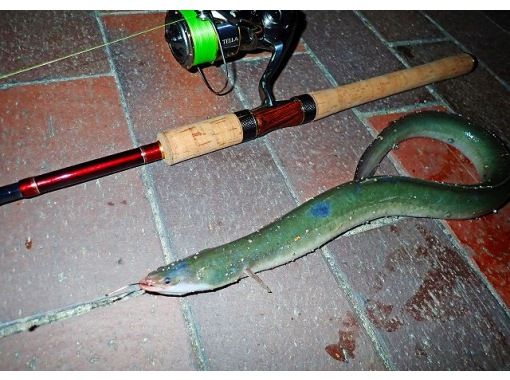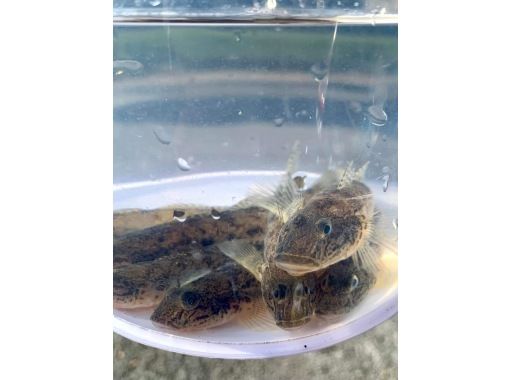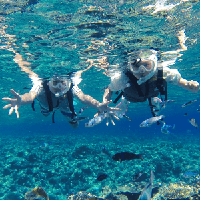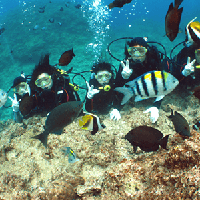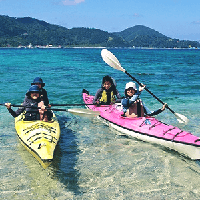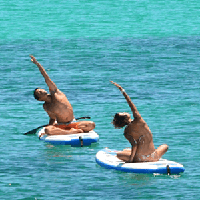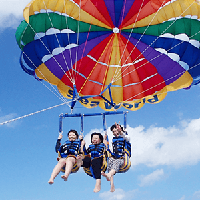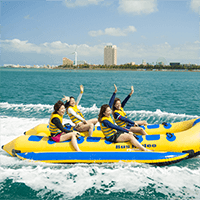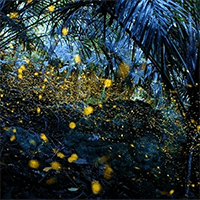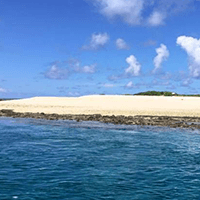List of Goby
Activities in the Kanto area is rich in, Tokyo is the top class in Japan in its kind. Downtown SUP (stand up paddle boat) walk, exciting to rafting, canyoning, swim in a river spree such as shower climbing in Okutama. In addition to being able to Caving in the Cave, Umiasobi of course enhanced. Diving, canoeing, dolphin watching in the Mikurajima, you can enjoy up to whale watching in the Ogasawara Islands. \ N The variety of manufacturing experience in the inner city can be enjoyed at the station near. \ N pottery, like the recent popularity glasswork and Herbarium, further Udon, Soba, food making experience, such as sweets making, food samples making, such as the stained glass making, manufacturing experience classroom There are quite a lot. Other, tea ceremony, Zen meditation, archery, Edo yoga classes from traditional cultural experience, such as Kiriko, spots and events to enjoy a wide range of genres of activity to VR experience has been held regardless of weekday holiday. Because such as manufacturing experience basically the indoor experience facilities, you can enjoy the play with confidence, even the day of the emergency rain. \ In n children and family together, or even good enjoy hands-on facility on a date a couple, good also to make a new hobby alone, to be good to play in the organization to invite many friends. Not only Japanese, the activity is very popular among foreigners, is rich in variety of how to play, such as guided tours of the houseboat and sushi is served. \ N2020_nenwaorinpikkudesaranimoriagaruTokyo. To experience a lot of activity, but please make a lot of memories!
- Age 3~Age 18
- Over 6 hours on the day
- 07:00
This is a tour for children only. Children who can travel by train will meet at the east exit of Chofu Station, and those who are being picked up by car will meet at Fukadaiminawa no Sato. This is a Kids Summer Home work DAY at Nogawa Nature School that includes two meals from 7am to around 5pm. Summer vacation independent research plan. One-day child care plan. Only held on weekdays with high tides. From mid-July to the end of August 7:00am Chofu Station East Exit Ground (for children who can ride the train) Fukadai Nigiwai no Sato (for children who are picked up and dropped off by car) ~Experience process~ 7:00am to 9:00am Move to the sea 9:00am to 12:00pm Experience rummaging in the sea (there is also an explanation session on living creatures) Observe 10 types of sea slugs, 10 types of crabs, 10 types of fish, 3 types of starfish, sea urchins, 3 types of sea cucumbers, and octopuses, and observe and explain various living creatures 12:00pm to 1:00pm GUSTO 1:00pm to 3:00pm Search for living creatures in the rivers of Yokosuka city Search for mantis shrimp, mitten crabs, river crabs, monk goby, Yoshinobori, Ukigori, Jyuzukaze goby, and Hebukuro dragonfly larvae. (There is also an explanation session on living creatures) In the rivers of Miura city, we will capture and observe eels in the rivers where they live. 4pm to 6pm Travel to McDonald's & information session on raising animals, feeding habits, and independent research (disbanded after 6pm) Chofu Station or Fukadaimizuno Sato What to bring: marine shoes, change of clothes, swimsuit, drinks (lots), hat, backpack, insect repellent Nogawa Nature School We look forward to your participation.
- Age 3~Age 70
- 2~3 hours
- 09:00 / 11:30 / 14:00 / 16:30
Held from spring to autumn Fishing for Japanese eels in the brackish waters of rivers Part 1: 8:00-10:30 Part 2: 10:30-13:00 Part 3: 13:30-16:00 Part 4: 16:00-18:30 This is a tour to fish for eels at the mouths of rivers that run through Tokyo. Japanese eels are born in the western waters of the Mariana Islands. They grow in rivers not only in Japan but also in East Asia, including China, Taiwan, and the Korean Peninsula, and are known to return to the Mariana Islands to spawn. Japanese eels (Anguilla japonica), which belong to the Anguilla genus of the eel family, are widely distributed in East Asia, including Japan, China, Taiwan, and Korea. In Japan, they mainly live south of Honshu, but there have been cases of them being caught in Hokkaido. Rental tackle, fishing rod, and equipment are included, so you can participate empty-handed. Two patterns of fishing will be done: casting fishing and plastic bottle tackle fishing, using earthworms as bait. While waiting for the tackle, you can fish for goby at your feet. The main target is eels, but sometimes you can also catch goby, crabs, and seigo. The tour lasts about 3 hours. Please bring a headlamp, a handy light, and drinks. *If you want to take the fish home, please bring an aeration device (battery-powered bubbler) to prevent oxygen deficiency, a plastic case or fishing bucket to prevent escape, and a cooler box. By train: 15 minutes walk from JR Joban Line or Tokyo Metro Chiyoda Line By car: Please use a nearby parking lot Meeting place: Near the Seven-Eleven Katsushika Kosuge 1-chome store. We will send you a map in advance, so please walk to the point. Migration of Japanese eels Japanese eels spawn in the summer in the waters west of the Mariana Islands in the Pacific Ocean. After hatching, they become willow-leaf-shaped larvae called leptocephalus. Glass eels are carried by ocean currents and reach East Asia in about six months, then transform into long, cylindrical glass eels and ride the high tide into rivers. After that, their transparent bodies start to take on color, and they are called yellow eels. During the yellow eel stage, eels grow large, and eat a variety of foods, including shrimp, crabs, small fish, and insects. The environment in which Japanese eels spend their growth period is wide, from coastal areas to the upper reaches of rivers, and includes not only freshwater areas but also brackish water and seawater. After several years to a dozen years, when they grow to a size of about 40 cm or more for males and about 50 cm or more for females, they begin to mature and are called silver eels. Silver eels leave their familiar rivers and coastal areas and travel to spawning grounds from autumn to winter. They reach the spawning grounds in the Marianas in about six months, spawn, and then end their life. PS: The minimum number of participants is 5 or more.
- Age 3~Age 60
- 2~3 hours
- 07:00 / 09:30 / 12:00 / 14:30
This is a safe, fishing experience for mantis shrimp using a fishing rod at a park in Edogawa Ward. Depending on the season, we will also have a goby fishing experience, so you can learn to fish with bait. After catching your fish, we will give a lecture on how to eat them and how to care for them. Meet at the fishing spot and start fishing for mantis shrimp and goby. If you want to take some home, please don't forget to bring a cooler and ice. Items to bring: hat, drinks, cooler + ice, swimsuit, change of clothes, simple tent Items to be provided by us: 1 set of fishing gear We look forward to your participation. Thank you, Nogawa Nature School Sonoda
最近チェックしたプラン
Please wait a moment
![[Tokyo, Chofu] Year-round event: Learn about sea and river creatures for one day, Yokosuka Miura, river to sea observationの画像](https://img.activityjapan.com/10/55289/10000005528901_1IgGyMt8_3.png?version=1720412538)
